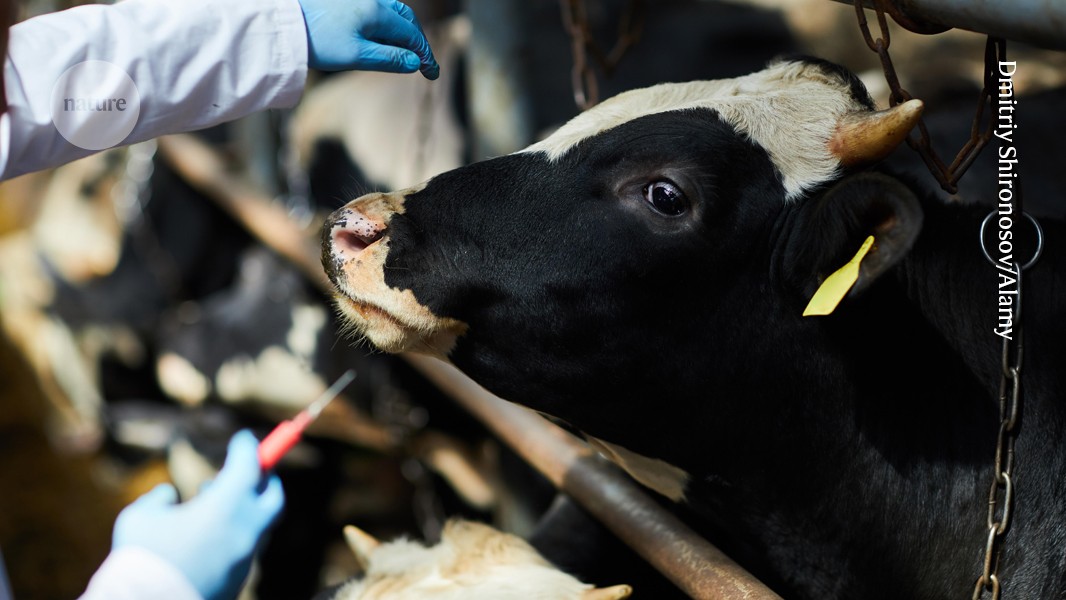Bird-flu vaccine for cattle aces early test

Vaccines for livestock could reduce the risk of human outbreaks, but hurdles remain

Bird flu vaccines for cattle could reduce the risk of animal-to-human transmission of the H5N1 virus.Credit: Dmitriy Shironosov/Alamy
As bird flu sweeps across US poultry and cattle farms, researchers are racing to find ways to contain the outbreaks before they ignite a human pandemic. Now, a team of scientists has developed a fresh approach: the first mRNA bird-flu vaccine for cattle.
Early findings, posted this month1 on the preprint server bioRxiv, reveal that the experimental vaccine triggers a strong immune response to the virus, and protects against infection in calves. The results have not yet been peer-reviewed.
This development could mark a crucial step towards creating flu vaccines for livestock and reducing the risk of animal-to-human transmission of a virus that poses a “real pandemic threat”, says Scott Hensley, a virologist at the University of Pennsylvania in Philadelphia, and a co-author of the work.
Fears of a bird-flu pandemic have been rising since the first confirmed outbreak of the H5N1 avian influenza virus in dairy cattle was reported in March 2024. Since then, the virus has affected more than 1,000 dairy herds across 17 US states. Health officials have linked 64 human infections and one death to the outbreak.
A fresh approach
To create a cattle vaccine, Hensley and his team built on more than a decade of work on seasonal bird-flu mRNA vaccines. The researchers took one such vaccine candidate and swapped out its viral haemagglutinin gene — which encodes a protein known to elicit an immune response — with the corresponding gene from the new H5N1 virus found on dairy farms. “It’s so easy to switch,” says Hensley. “That’s really the value of using mRNA-based vaccines.”
Last year, Hensley’s team showed that their vaccine protects against avian flu in ferrets2, a commonly used laboratory model for testing flu vaccines. For the latest work, they inoculated 10 calves and, 49 days later, fed them milk from H5N1-infected cows — a suspected route of transmission among cattle.
After that exposure, the vaccinated calves had significantly lower levels of viral RNA than the unvaccinated calves did, indicating that the vaccine helped to curb infection.
The study tested only vaccine responses in calves; much of the avian-flu transmission on dairy farms occurs among lactating adult cattle, says virologist Richard Webby, director of the World Health Organization Collaborating Centre for Studies on the Ecology of Influenza in Animals and Birds in Memphis, Tennessee. Hensley’s team is already working on extra trials in lactating cows.
Even without that data, the current results are a strong first step towards developing a vaccine: “It’s good news,“ Webby says.
Enjoying our latest content?
Login or create an account to continue
- Access the most recent journalism from Nature's award-winning team
- Explore the latest features & opinion covering groundbreaking research
or
Sign in or create an accountdoi: https://doi.org/10.1038/d41586-025-01497-y
This story originally appeared on: Nature - Author:Humberto Basilio


















